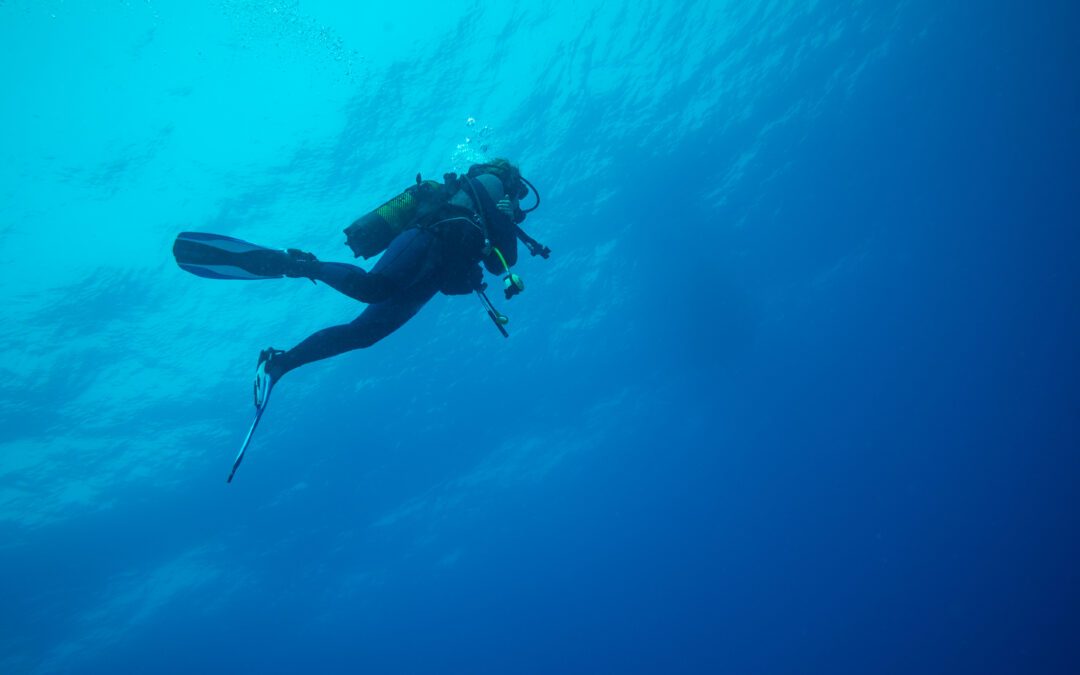
Sailing around the world is the stuff of daydreams and romantic notions. Who hasn’t sat in their office or behind the wheel on the way to soccer practice with visions of leaving it all behind for a simpler life at sea? But reality soon crashes that party; if only you had more money, a way to make it work with the kids, and the knowledge of how to actually sail a boat.
Well, believe it or not, this dream is not impossible. Regular people do it all the time, and it’s not nearly as hard, expensive, or impractical as you may think. With the right preparation and proper expectations, you too can become a competent world sailor.
Who Does It and Why Do They Do It?
The sailors we interviewed for this story all had two things in common: a desire to make a change in their life and the courage to make that change a reality. Where they depart from each other is in their motivations. Some are former business owners who decided to reprioritize what’s important, others were lifelong adventurers who wanted to rekindle their passion for exploration, and a few wanted to build a closer connection to nature.
Kim Brown of SailingBritican describes her journey from the office to the ocean:
I wish I could say that the pursuit of our lifestyle change came easy, but it didn’t. Buying a sailboat and sailing around the world was one of those dreams that my husband and I linked to winning the lottery. We’d lay awake at night talking about what we’d do if we won 50 million (or whatever silly amount) and it was always about buying a boat and sailing around the world.
Back in 2012 I instigated a management buyout of a company I owned. After growing a successful company for over eight years I was burnt out. My health was declining and I felt as if I lost my zest for life.
Everything felt broken and nothing was going my way. I was paddling up a raging stream not getting anywhere. I sent my husband Simon a text saying ‘I’ve had it. Let’s sell the house, the car and all our stuff, buy a boat and sail around the world.’
As soon as our decision was made, the universe miraculously turned me around to go with the river and life started flowing like nothing before. In the course of three months we sold a house, a sailboat, a car, offloaded all our possessions to friends and neighbors, and purchased a 56’ Oyster Yacht.
This desire to offload possessions and shed the trappings of modern life was a big part of Behan Gifford’s decisio n as well. She chronicles her life at sea with her husband and two children at Sailing Totem.
n as well. She chronicles her life at sea with her husband and two children at Sailing Totem.
“Somewhere along the way, our live
s had spun into a hectic pace of juggling a dual career household with hefty carpooling demands and weekends of quality time with PowerPoint,” she laments. “This was not the life we wanted! We wanted to live close to nature, sourcing power through the sun and wind, and raise our children in tune with the environment.”
And sometimes it’s as simple as having a great idea one night over a few glasses of wine in a hot tub, as it was for Mike and Rebecca Sweeney of Zero to Cruising. They always enjoyed travel and adventure, and had long thought the idea of an extended journey on a sailboat would be exciting. “The fact that we had no sailing experience at that time,” Mike says, “didn’t for a second dissuade us from pursuing the idea.”
Preparing for the Journey
Behan of Sailing Totem recommends getting started with a book called Voyaging With Kids, a sailing guide aimed at families but useful for anyone who wants to sail the world. At a minimum, sailing around the world requires selecting the right boat for your needs, having the ability and skill to sail it (or knowing when not to), and knowledge of weather and navigation. You’ll also need to hone your near-shore skills for anchoring and build an understanding of the maritime “rules of the road.” In addition, having mechanical skills to fix your boat along the way are helpful unless you have the finances to pay for everything that will need to be repaired. Behan further advises that “as much as any of these, some of the best prep is to have a sense of humility and respect for the ocean.”
Joining a local yacht club and participating in sailing races are effective ways to sharpen your skills and learn from more knowledgeable sailors. In many cases, however, experience is the best teacher. Making the leap into sailing exposes new sailors to the required learning milestones.
Before making that leap, take the following precautions for long journeys that do not include island stops or ports:
- Ensure that you have enough food and water on board for the time of the crossing, plus extra in case something happens.
- “Buddy boating,” while not for everyone, can make longer crossings less stressful since there is another boat nearby.
- If you take any medications, have an ample supply of them on board.
- Pack a good first aid kit that includes basic antibiotics that you may need for illnesses and infections.
- Stock up on seasickness medications like Dramamine. Even if you have never been seasick, it may happen.
Maintaining a Healthy Mind and Body
Being at sea for an extended period of time can take a physical and mental toll on even the hardiest sailor. The rigors of sailing itself, while physical and stressful, may not be enough e xercise to keep you in peak shape. Couple this with a less-than-optimal diet and you’re building a recipe for disaster. Mike from Zero to Cruising shares these 5 essential strategies he uses while at sea.
xercise to keep you in peak shape. Couple this with a less-than-optimal diet and you’re building a recipe for disaster. Mike from Zero to Cruising shares these 5 essential strategies he uses while at sea.
- Cook your own food
Eating properly is the number one thing that you can do to maintain your health. The best way to do that, and to save a significant amount of money, is to prepare your own food. The modern boat galley is similar, albeit a little smaller, than a kitchen you’ll find in an apartment. If there is food that you can cook on land, you can do the same on a boat. You can’t out-exercise a bad diet!
- Limit alcohol
Cruising on a boat can be a very social activity. Once there is more than one boat in an anchorage, there exists a very real chance that someone will organize a get-together. It’s very easy to get caught up in that scene and consume more alcohol than you would on land. Be aware of this trend and set limits.
- Find an activity that you enjoy doing
Contrary to what some people will have you believe, sailing on a cruising boat is not exercise. If you lived your land-based life in a cubical, it may be a bit more physically active, but it’s still not sufficient to really increase your health. Find some physical activity that you enjoy doing, like jogging or swimming, that you can do throughout the journey.
- Use the space you have on the boat
Finding the room to work out on a boat should not be a problem. Bring a suspension trainer, some stretch bands, and kettlebells on board. In addition, you can always do calisthenics and bodyweight exercises for resistance training.
- Schedule a time every day to work out
There is always some chore or repair item on a boat. However, the most important piece of equipment that requires daily maintenance is your own body. Make exercise a priority for yourself by scheduling a time every day to work out. If possible, do it first thing in the morning so there is less likelihood that you’ll find a “reason” to miss your session.
Sailing with Kids: Making It Safe and Educational
While managing their needs for safety, education, socialization, and entertainment for days and weeks onboard a boat can be a challenge, it’s definitely possible. You just need a little bit of special planning and the right attitude.
Safety is paramount, so always follow two basic rules. First, before any child gets on board a boat, they should have basic swimming skills. Second, any time a child leaves the cockpit while under sail, they should be wearing a life vest.

Many parents who sail with their children, like Eben and Genevieve Stolz of It’s a Necessity, find it easier to have a third adult on board for any longer passages. One adult will have the full-time job of caring for and entertaining the children, especially younger kids, while underway. This leaves one parent very little time to help with any sailing-related duties, so it’s best to have another set of hands for the boat work.
If children are school-aged, they will need to be homeschooled while at sea. There are two basic options for homeschooling: a packaged program, or a customized program parents build themselves. If you employ a packaged program like the ones offered by The Calvert School, you will benefit from having lesson plans broken into convenient units for an entire school year. Designing your own program based on national standards is somewhat harder, as it’s easy to overlook or miss key parts of a well-rounded educational program.
Providing kids with the opportunity to socialize and develop interpersonal communication skills is another consideration when sailing around the world. Kim Brown found some relatively easy and natural solutions for her daughter Sienna. When the family wintered for six months in Sicily, her daughter attended a preschool for half the day and played with other “boat kids” at the marina for the second half of the day.
When Kim and her family crossed the Atlantic with the Atlantic Rally for Cruisers, Sienna made friends with the more than 25 other children making the crossing. They spent six weeks preparing during which time Sienna made amazing friends. Once they arrived in the Caribbean, the family spent the season meeting up with the same friends she made before the crossing.
“No matter where we went there was always someone around to play with,” Kim says. “The other child might not speak English or they may be several years older, but I discovered that there are no boundaries when it comes to playing.”
Dangers on the Horizon: Storms, Pirates, and Runaway Powerboats
The good news if you’re considering an around-the-world sailing trip is that reports of dangers at sea seem to be overblown media hype for the most part. The reality is that most of these dangers can be avoided with a little common sense, planning, and discipline.
Eben and Genevieve Stolz follow a few simple ground rules when sailing:
- Never sail on a schedule. This means, check the weather, wait for the right weather, and go only when you feel it is safe to do so. If you absolutely have to get somewhere by a certain time and try and push it, you are running the risk of hitting bad weather.
- If you think something needs to be done, do it immediately. If a part looks worn and could be replaced, replace it. You don’t want to be stuck in a bad situation in the middle of the ocean when that part fails.
As for pirates, they are a concern in certain parts of the world. However, they typically limit themselves to very small areas, so most sailors use common sense and avoid those areas. In reality, dangers at sea are local and steeped in carelessness. “We were in a popular anchorage not far from San Diego,” says Behan, “when a shiny new powerboat lost control and struck several moored vessels in a row before their fuel line was disconnected and the boat stopped.” Nothing she ever faced in the “scary” parts of the world came close to that experience.
Ready to Set Sail?
Kim Brown’s advice: Get out there and do it!
“I’ve met far more people that talk about sailing and never do it than those that do it. Most marinas are jammed-packed with boats that never leave the dock. Loads of boat owners talk about sailing further afield – perhaps to another country or state but they never quite make it further than their trusty well-known anchorages or day-trip spots.”
If you’re scared about a particular aspect of the process, get some education and experience. Take a course in boat handling skills, use your boat in the low season – perhaps to practice leaving and arriving at a slip. Find a friend to learn with helping you to make the process more exciting and enjoyable.
There’s a lot of ocean out there; it’d be a shame to never set sail on the adventure of a lifetime.
Images:
- Sailing Around the World, image courtesy of Saling Britican
- It’s a Necessity, image courtesy of It’s a Necessity
- Exercise on a boat, image courtesy of Zero to Cruising
- Sailing with Kids, image courtesy of Sailing Totem

